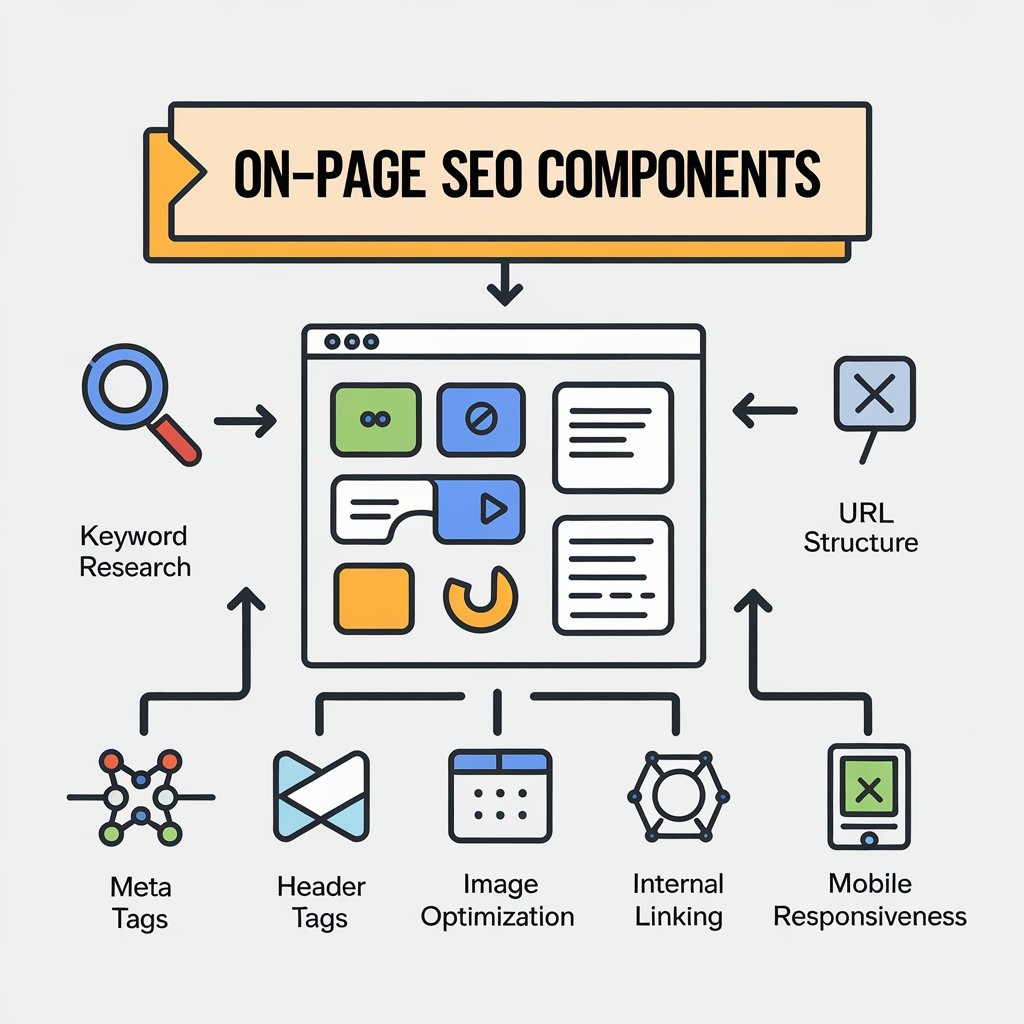How to improve SEO for small business in digital marketing

Improve SEO for small business, So first we have to know about what is SOE {search engine optimization} and the types of SEO. So the SEO helps you to optimize your website and your content by the use of keywords
helps . And also rank websites or specific brands. And SEO helps to improve the quality of a web site’s and the content so that search engine will list the website so by the SEO and website looking to improve it’s visibility and attract more organic traffic.
By the way, are you a small business owner looking to Improve SEO for small business
Improve SEO for small business If so,then you need to focus on improving your on-page SEO on-page refers to the optimization strategies you can implement directly on your website to improve it’s visibility on search engines
In this article we will discuss five effective strategies that can help small businesses boost their
On-page SEO. From will cover all the essential aspects of on-page optimization. Don’t let your
Small businesses get lost in the online space. Follow these effective on-page SEO strategies and watch your website climb the search engine rankings, bringing you more opportunities for growth and success.
types of seo
Improve SEO for small business (SEO optimization) is a process which has many steps which we call types of SEO. Let us know what are the types of SEO.
- On-page SEO
- Off-page SEO
- Technical SEO
- Local SEO
- Black Hat SEO
- Gray Hat SEO
- Content SEO
1. On-page SEO
This section of on-page SEO optimizes individual web pages to improve search engine rankings and attract relevant traffic. Key elements include optimizing the content by using relevant keywords, meta tagssetting up a properly placed title and description—and heading tags (H1, H2). This also encompasses mobile friendliness, fast page load times, and user-friendly URL structures. On-page SEO deals with the content as well as the HTML source code of a page. Thus, this on-page search engine optimization ensures an easy indexing of the page by the search engine, while at the same time ensuring maximum usability for the user to achieve higher rankings in the results pages.

2. Off-page SEO

3. Technical SEO
Technical SEO part of Improve SEO for small business its refers to optimizing the overall architecture of a website so that search engines can crawl it efficiently to index. It focuses on the aspects behind how the website looks, which include site speed, mobile friendliness, secure HTTPS, structured data or schema markup, XML sitemaps, and fixing crawl errors, to mention but a few. In technical SEO, there’s also your robots.txt files, canonical tags, and a clean, well-organized URL structure. It is meant to be properly optimized for the technical performance of a website and ensure that search engines can access, read, and rank it well.

4. local SEO
Local SEO is the process of how you can help Improve SEO for small business feature up in results when people search for your product or service in a specific location. The service looks at and focuses on search engine optimization to ensure the business is more likely to appear in location-based searches; for example, “restaurants near me” or “plumbers in [city name].” It also encourages enrollment with Google My Business, acquiring positive customer reviews, and uniformity of the business’s name, address, and phone number across all media. Local SEO Improve SEO for small business local customers by ensuring their presence on the map and search result when people look for some service in their immediate locality.

5. black hat SEO

6. gray hat SEO
improve SEO for small business in digital marketing
Improve SEO for small business in simple terms means making your website easier for both people and search engines like Google to find. Here’s a some steps to improve seo for small business
1.Use the Right Keywords: Find out what words your customers are using to search for products or services like yours. Use these words in your website’s titles, descriptions, and content.
2.Make Your Website Mobile-Friendly: Ensure your website looks good and works well on smartphones. Google ranks mobile-friendly sites higher.
3.Create Useful Content: Regularly post content that answers your customers’ questions or solves their problems. Blogs, FAQs, and product guides help your site rank better
4.Speed Matters: Your website should load quickly. Slow websites lose visitors and rank lower in search results.
5.Get Local: Add your business to Google My Business. Encourage customers to leave reviews and make sure your address, phone number, and hours are correct.
6.Use Social Media: Share your website content on social media platforms to drive more traffic and create backlinks, which help SEO.
7.Optimize Images: Use descriptive file names and alt text for images to help search engines understand what’s on your page.
8. Focus on Quality Links: Get other reputable websites to link back to your website. This shows Google that your site is trustworthy and valuable.
By consistently applying these steps, Improve SEO for small business have a better chance of showing up higher in search results, helping you reach more customers.
Con clusion
Improve SEO for small business to strengthen small businesses through digital marketing SEO, very first, plays along with the words that matter. Then comes the release of quality content, and then the optimization of the website for a human as well as for the searching machine. Claims the listing for a local listing, works on backlinks, and gets customers on social media too. Hey, it’s just a process, and it takes time. So, always be consistent and patient Improve SEO for small business while continuing to strive for better searches.
FA Qs
SEO, or Search Engine Optimization, is the process of improving your website to rank higher in search engine results. For small businesses, this means more visibility and more potential customers finding you online
optimize images, use a content delivery network (CDN), and reduce unnecessary code. Tools like Google PageSpeed Insights can help identify areas for improvement
Use tools like Google Analytics and Google Search Console to monitor your website’s performance. These tools provide insights into your traffic, keyword rankings, and more.
